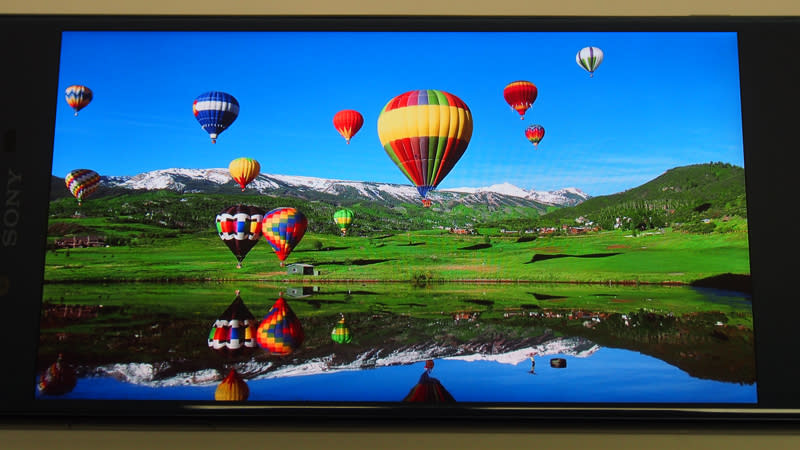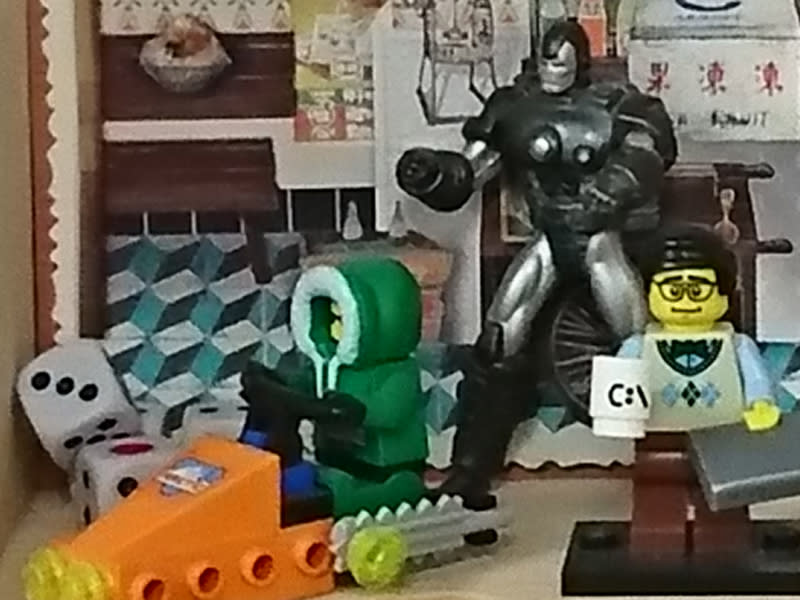Sony Xperia XZ review: Sony fans finally get their flagship phone
Note: This article was first published on 31st October 2016.
Overview
Sony fans who have been waiting for a true flagship smartphone in Singapore - your wait is now over. While the Xperia X Performance never made it to our shores, Sony Singapore did bring in the Xperia XZ. It packs a flagship-tier Qualcomm Snapdragon 820 processor, with water resistance and dust protection rated at IP65/68.
The Xperia XZ is part of Sony’s relatively new efforts at rebranding their notable smartphone range - in case you weren’t following, the Xperia Z5 and its siblings are the last of the Xperia Z family, and February 2016 saw the preview of the first smartphone from the rebranded range, the Xperia X. Later, Sony Singapore launched the X, along with the mid-range XA and XA Ultra.

Sony phones have a uniform design language that persisted through the years, and the XZ isn’t going to be very different in that regard. As always, their focus is on design, camera performance, and general perks related to user experience. Besides its flagship processor, it also packs a slightly upgraded 23MP camera sensor with a Triple Image Sensing tech.
So is the latest Sony flagship a good contender amongst other 2016 flagship devices? Let’s find out.
|
|
|
|
|
|
|
|
|
|
|
Design & Handling

The Sony Xperia XZ doesn’t stray very far from their OmniBalance design language. After all, it is the flagship version of the Xperia X, so we’d describe the Xperia XZ with the same terms: monolithic, angular, and minimalist. What’s nice and new, however, is the use of ALKALEIDO metal (it's a trademarked material) for a nicely-machined look on its rear.

While it’s similar, the design is not identical to the Xperia X. For starters, the X had prominently-visible lines that gave it a blockier appearance. The XZ’s gaps are less obvious and the sides level off at the display. This, in turn, gives it a near-seamless, slightly curved look, which Sony calls the Loop Surface. The shine on the metal matches the glare from the glass, which contributes to its overall uniform look. While it boils down to personal preference, the Xperia XZ feels a little more polished to us. Perhaps, Sony can still push for better aesthetics by making the bezels even less visible, without straying from its iconic look.

Handling the phone is like riding a bicycle – if you’ve previously used a premium Xperia phone, you’d instinctively know how to use the XZ even if you’ve never seen one before. The dual-SIM tray has the second SIM slot doubling up as a microSD card slot. The physical camera button is in the same lower-right corner, adjacent to the volume rocker. The silver power button along the right side still doubles as a fingerprint sensor. The one key difference between this phone and the Xperia X is the use of a USB Type-C port. The phone feels thinner than its reported 8.1mm thickness, and all 161g of its weight seems evenly spread out. The handling is as good as its looks, and it feels light.

Despite its premium build, it would be difficult for unfamiliar folks to differentiate it from an Xperia Z5 (save for the color option differences). So, it’s a good design that’s subjectively better than the vanilla X, but it’s largely uninspired at this point. Then again, why fix something that isn’t broken?
Display & Audio

This flagship phone sports 5.2-inch Full HD (1,920 x 1,080 pixels resolution) display panel. It uses Sony’s proprietary TRILUMINOS display tech and a host of other Sony technologies such as X-Reality and Dynamic Contrast Enhancement to boost image quality. In short: it’s nothing Xperia users haven’t experienced yet.
The test image shows that the Xperia XZ’s panel has a warm tone, which is most evident in the snow-capped hills and black hot-air balloon. The colors are lush, with the display having a decent handle on varying shades – you can see in the different red-hued balloons that are scattered around the image. At full brightness, the phone is still readable under the sun. There are barely any gaps between the display and the phone’s bezel, which grants a pleasant viewing experience. That said, the warm color temperature could use a little cooling off.
Maximum volume audio on the Xperia XZ is a lot softer than what we’d like. Otherwise, it’s functional. Don’t forget that the Xperia XZ natively supports FLAC, ALAC, DSD, and LPCM, on top of its in-built Hi Res Audio feature that can upscale compressed audio files.
UI & Features
IP65/68 dust and water resistance

Water protection returns to the Xperia and the Xperia XZ features IP65/68 ratings. We asked Sony why their phone had two IP values since it’s commonly understood that devices usually have one IP rating for its maximum dust and water tolerance, and everything below that rating is covered.

Sony then referred us to this water resistance chart on their website, and explained that the XZ’s water resistance covers specific water protection standards – “Protected against heavy jet spray for at least 3 minutes” and “Protected against the effects of continued immersion in water at depths greater than 1 metre” (with its duration entirely up to Sony’s discretion). It’s oddly specific, but we were satisfied with the response since this means that the phone is sufficiently protected for regular smartphone usage.
USB Type-C

Unlike the Xperia X, the Xperia XZ uses a USB Type-C port. Many mobile devices are slowly migrating to this format, and Sony is one of the second- or third-wave movers in this regard. It’s not a massive change if you’re already familiar with other USB Type-C devices. However, if you followed Sony through its entire smartphone life cycle, you’d know that USB Type-C is a fairly new addition to their mobile phone lineup.
Benchmark Performance
The Sony Xperia XZ packs a flagship Snapdragon 820 SoC, and it's helped along with its Adreno 530 graphics processor. It comes with 3GB RAM and 64GB internal storage that’s expandable via microSD card up to 256GB.
Naturally, we’d pit it against other Snapdragon 820 phones we’ve encountered thus far, along with other phones that come with an equivalent to the Qualcomm processor.
|
|
|
|
|
|
|
— | — |
| — |
|
|
|
|
|
|
|
|
|
|
|
|
|
|
|
|
|
|
|
|
|
|
|
|
|
|
|
|
|
|
|
|
|
|
|
|
|
|
|
|
|
|
|
|
|
|
|
|
|
|
|
|
|
|
|
|
|
|
|
|
|
|
|
|
|
|
|
|
|
|
|
|
|
SunSpider
SunSpider JavaScript measures the browsing performance of a device when processing JavaScript. It not only takes into consideration the underlying hardware performance, but also assesses how optimized a particular platform is at delivering a high-speed web browsing experience. Web surfing was smooth, and the benchmark score showed that the XZ is certainly suitable for its class of devices.

For your reference, the Xperia XZ scored 54.177 for the JetStream benchmark – again, this is a new test where we're gathering test data, so we'll be a while more before we can transition. But as usual, the higher the score, the better.
Quadrant
Quadrant benchmarks a device’s CPU, I/O, and GPU performance. From our tests, the Sony Xperia XZ has a moderate benchmark score for a flagship smartphone, and it’s able to hold its own against other Snapdragon 820-equipped phones.

3DMark’s Ice Storm Unlimited
3DMark’s Ice Storm Unlimited test uses a mix of graphics and physics tests to measure hardware performance. The first test measures the GPU’s ability to process lots of vertices, while the second does the same thing with lots of pixels and post-processing effects. Finally, the physics test switches the load to the CPU to test its ability to process physics simulations, while keeping GPU load low. The XZ managed to pull impressive numbers for their graphical benchmark, and our real-world experience with the phone was just as awesome.

For your own reference, the Xperia XZ scored 2,394 for the 3DMark Sling Shot benchmark – we're still gathering companion results for this new benchmark, but as with 3DMark results, the higher the score, the better.
Our real-world XZ usage was nothing short of pleasant and responsive, and 64GB was comfortable to work with.
Camera Performance

The rear camera uses a 23-megapixel, 1/ 2.3-inch Exmor RS sensor that relies on Sony’s BIONZ mobile image processing engine. It’s paired with a 24mm Sony G lens, and sensitivity goes up to ISO 12,800. What’s truly new is their new Triple Image Sensing technology (a missed opportunity to call it the Triforce). The rear camera now comprises of not one, but three sensors – an imager that predicts subject movement, a Laser AF sensor for speed and accuracy when autofocusing in low-light situations, and an RGBC-IR sensor that measures visible colors and infra-red information for a better grasp on white balancing. By combining these three sensors, we’re led to believe that the Sony Xperia XZ is capable of true-to-life colors, accurate autofocus on subjects, and commendable low-light performance.

From the test image, it’s quite easy to see how the Xperia XZ is one of the sharpest shooters we’ve met thus far. It’s a touch lower in noise too, compared to the Xperia X’s test image. Color-wise, it has strong blacks, and it adopts a slightly more natural tone at the cost of vibrancy. This also makes the XZ’s image less warm than its Xperia X counterpart. It’s clear that the Xperia XZ did very well as a flagship smartphone shooter, outdoing the OnePlus 3 and LG G5 while putting it on par with the likes of the HTC 10 and Samsung Galaxy S7 Edge.
Battery Life
Our standard battery test for mobile phones includes the following parameters:
Looping a 720pixel video with screen brightness and volume at 100%
Wi-Fi and Bluetooth connectivity turned on
Constant data streaming through email and Twitter
The Sony Xperia XZ packs a 2,900mAh battery, aided by Qnovo’s Adaptive Charging technology for battery longevity (more information here). It also supports Qualcomm Quick Charge 3.0, allowing the device to fast-charge with appropriate quick chargers – the one provided in the box is a regular 1.5A charger. For power-saving, there’s the familiar STAMINA mode found on Xperia phones.

Despite its decent battery capacity and flagship processor, the Xperia XZ is quite the battery hog. From our tests, the phone lasted a mere 380 minutes, putting it on the lower end of other flagship phones. At a glance, only the LG G5 had a lower total. Our day-to-day usage was a different story, as the Xperia XZ did not bottom out with six hours of typical use. Based on our power consumption calculation, the XZ's battery drain is less efficient than the HTC 10’s, but more efficient than the LG G5’s - though they all pale in comparison to the Galaxy S7 Edge.
Conclusion

The Sony Xperia XZ is indeed a flagship product that can compete with other flagship rival phones out there. The S$998 price tag seems pretty much par for the course within its tier. While many factors boil down to personal preferences, we can’t deny that the Xperia XZ could strive for an even better battery life. Camera performance on the XZ is one of the better ones we have experienced so far, which is a great plus point for people who want a good Android cameraphone that isn’t from Samsung. All in all, it’s a good smartphone, and even more so for Sony fans who are looking for an upgrade. However, it faces worthy challengers who charge fewer dollars for their flagship phones (like the incoming Moto Z and the OnePlus 3).
What we're certain about when it comes to the Xperia XZ, is how Sony isn’t fixing things that aren’t broken. The features on the Xperia XZ aren’t novel to a phone, and physical changes are minimal. Things like water-resistance and fingerprint sensors are slowly becoming (if not already) a staple for flagship mobile handsets, and the shift to USB Type-C is expected with due time. It’s also clear that Sony leans towards functionality over novelty – which was what helped the Galaxy S7 Edge and the unfortunately Note 7 earn high praise. However, it doesn’t have the same charisma or fanfare, and we attribute that to a tired design (despite it being appealing and practical), coupled with product cycles that are too short to create a sense of receiving consequential upgrades. If you want exciting innovation (like dual rear cameras and modular design) in the mobile space, you’d have to look towards the Korean, Chinese, and even some Western phone makers.
But yeah, if you want something that's simple and actually works, consider the Xperia XZ.




